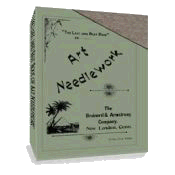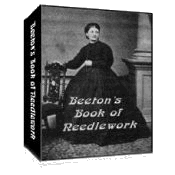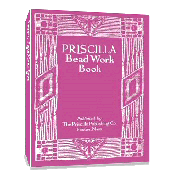Which Transfer Method is Right for You?
How to Transfer A Design
Find a transfer method that works for you!
One of the most frustrating things about needlework is having to transfer a design you have found onto the fabric of your choice. Many times the results are time consuming and the transfer is not as good as you would like. As with all crafts, what works best for one does not work best for all. Below you will find a number of different ways to transfer your design onto your fabric. Hopefully one will be "just right".
Direct Transfer Method #1
For this type of transfer you will need a light table or a window with bright daylight shining through. Turn on your light table. Place your design on the light table and place the fabric over the design. If you are using the window method, you will find that taping the design to the back of the fabric or to the window helpful as the design will not slip easily while you trace it onto the fabric. To trace, use a light pencil, chalk, air or water-soluble pen, or even a fine tip permanent marker in the shade of thread you will be using.
Direct Transfer Method #2
Another type of transfer is to use the transfer paper and tracing wheel that it sold in sewing departments. Seamstresses have been using this method for quite a long time. The paper comes in either dark or light shades. Use a dark paper on light material and a light shade on dark material. The tracing paper is placed between the fabric and the design. The tracing wheel, which is a multi-toothed disk, (reminds me of a spur, like the cowboys wore in the old movies) is run over the design pressing the color onto the fabric.Direct Transfer Method #3
This method calls for old fashion carbon paper. Place the carbon paper between the fabric and design. Using a sharp object like a pencil or stylus, trace the lines of your pattern. The pressure on the carbon paper will transfer the design to your fabric. This must be used carefully as the carbon paper tends to be messy and will transfer smudges to your material.Basting Transfer Method
Tissue paper can be used to help transfer a pattern to fabric also. Trace the design on tissue paper (which is easily done by placing it over the design and tracing) and then pin the tissue to your fabric. Baste or machine stitch (through the tissue paper) to your fabric. You can then pull away the tissue paper and you will have a stitched outline of your design.Copy Machine Transfer Method
Why not use the technology available today to speed up the transfer making process? Almost everyone has access to a copier. Special iron-on transfer materials can now be found at most craft or fabric stores that are used in conjunction with copy machines. The directions come with the transfers. Since every manufacturers' directions are a bit different, make sure to read them carefully. After making the transfer, all you will need is a very hot iron and a little patience. Again, be sure to read the manufacturer's directions. Just remember, a "pressing" motion is used instead of an "ironing motion." Unless otherwise instructed to do so, a sweeping motion with the iron can smear the transfer.Ink Jet Printer Transfer Method
Transfer using an ink jet printer. Kits are available now that allow you to print directly from your ink jet printer to transfer medium. It is important when doing this that your printer is printing well. Any streaks that your printer makes will ultimately show up on your transfer. After the transfer is made, use a hot iron to transfer it to your material.New Transfer Methods are always evolving
New ways of transferring images from a pattern to your fabric are being developed everyday. Keep an eye open when you are at your craft or fabric store to see if any of the new methods are for you. Until then, try one or more of the methods listed above. I'm sure you will find at least one that will be "just right!"Return to top.
Return to Redwork Instructions.
Return to Embroidery Instructions.
Return from Transfer Methods to Home.



 433 pages!
433 pages!

